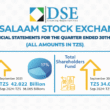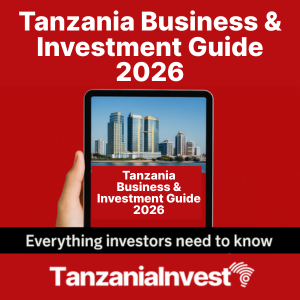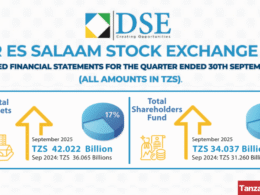By Esther Manase, Stanbic Bank Tanzania. Foreign exchange losses have been the subject of much pain and heartache for financial managers across many businesses.
In some sectors and businesses exchange rate movements have torn big holes in otherwise sound financial performances.
Stanbic Bank Tanzania provides a simple introduction to foreign exchange risk, together with a high level view of some of the available alternatives to manage this risk.
Foreign exchange risk is type of market risk that arises from the uncertainty and unpredictability of future exchange rates.
As regards Tanzania, the Dollar/ Tanzania Shilling exchange rate over the last few years has shown significant movements.
After one of its most turbulent times in recent years in 2015, few perhaps may have expected the Tanzanian Shilling to be so stable against the Dollar this year.
Indeed, predicting the path of asset prices such as foreign exchange rates consistently is extremely difficult.
So much so that globally and locally many companies have gone under the heavy burden of foreign exchange losses stemming from holding too much in foreign exchange assets or liabilities when rates have moved against them.
As such, financial market experts worldwide employ many complex tools as well as spending significant sums all in the hope of being able to better predict future changes in currencies and manage foreign exchange losses.
A stable currency is most desirable for forecasting business costs, especially where there are importing and exporting activities, as these are activities that necessitate the use of foreign currency.
Depending on whether you are buying from or selling to the rest of the world the exchange rate movements will impact of your costs and revenues.
Whereas a typical importer business is looking to buy goods from abroad and sell them in the local market, they will be concerned with Shilling weakness, as this will increase their cost of goods sold denominated in local currency.
Conversely, for an exporter, who sells goods and services from Tanzania abroad, they stand to benefit from a Shilling weakness, as each dollar is exchangeable for more and more local currency.
The concept of hedging is one that refers to undertaking transactions to minimize the risks associated with future uncertainty.
There are a number of foreign exchange risk hedging alternatives that are generally available to businesses to assist with managing foreign exchange risk.
The most common ones are forward exchange transactions, foreign exchange options and foreign exchange swaps
Forward exchange transactions are where the rate to be used at a future date is determined and agreed today.
This price to be used in the future is called a forward price. In doing forward exchange transactions a business is essentially firming up the future cash outflow that will be required to secure the exchange of one currency for another.
Stanbic Bank Tanzania’s Head of Global Markets, Ivan Tarimo, says that the advantage of foreign exchange forwards is that they can determine with certainty the future cash flow.
“Forwards though are not without potential disadvantages, as there is the possibility that the actual market rate on the future date may be at a more favorable price than the forward price,” he notes.
Foreign exchange options work like insurance, where one pays a premium for protection against unfavorable future changes in exchange rates, whilst maintaining the potential benefit of favorable changes, for a specific amount and timeframe.
The premium charged will differ depending on amount, timing and target price. On the date of transaction the buyer of the option has the right but not the obligation to execute it.
This allows them to either trade at the option rate or go into the market if the market happens to be offering a better rate.
Foreign exchange swaps are mostly recommended for companies who earn both foreign and local currencies.
In this case one temporally borrows funds in one currency in exchange for another, in order to lower the overall cost of funds.
These are just some of the commonly used tools used to hedge against foreign exchange risk.
”We recommend that businesses have clear foreign exchange risk management policies highlighting risk appetite, products, tenors and amounts that will be allowed to participate in.
When it comes to the philosophy of whether to hedge or not, at times doing absolutely nothing and hedging everything are the same thing.
Both show an absolute conviction on future rate movements. Therefore where uncertainty exists, it is advisable to consider hedging a portion of the exposure,” Ivan Tarimo, the Head of Global Markets for Stanbic Bank Tanzania concludes.
For more details about foreign exchange risk management contact Esther Manase at ManaseE@stanbic.com









